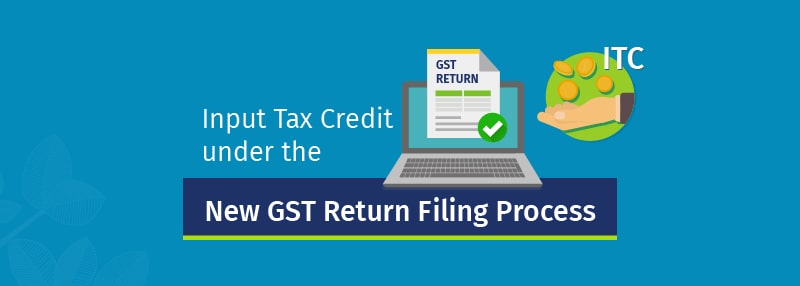Input Tax Credit is the heart of GST compliance for all taxpayers. It is the provision of input tax credit that ensures that taxpayers only need to pay GST on the value added to the goods or services supplied. In the first phase of GST implementation, taxpayers are required to claim input tax credit on a self-assessed basis, as declared in GSTR-3B. In the second phase of GST implementation, as discussed in our article ‘New GST return filing process’, input tax credit of each taxpayer will be arrived at based on the invoices uploaded by their suppliers and locked by them. Let us understand all about the new GST input tax credit rules.
New GST Input Tax Credit Rules – Mechanism
As per the new GST input tax credit rules, only an invoice uploaded by a supplier and locked by the buyer will be a valid document for claim of ITC by the buyer.
Suppliers must pay the tax liability on supplies made during a month by 20th of the next month. Suppliers will also have the facility to continuously upload invoices for their supplies to the GST portal. These invoices will be instantly shown to the buyers in the GST portal and can be locked by them. Input tax credit for a month will be arrived at based on the invoices uploaded by suppliers until 10th of the following month. Invoices uploaded by suppliers after 10th of the following month will be considered for ITC in the following month, as per the input tax credit rules under new GST returns.
Let us take an example to understand the input tax credit rules under new GST return:
Example: Super Cars Pvt Ltd supplies cars to Rakesh Automobiles. In April ’19, Super Cars Pvt Ltd makes the following supplies to Rakesh Automobiles:
| Date of invoice | Date of invoice upload by Super Cars Pvt Ltd | Return in which Super Cars Pvt Ltd has to pay the liability | Return in which Rakesh Automobiles can avail input tax credit |
| 5th April ‘19 | 25th April ‘19 | April ‘19 | April ‘19 |
| 15th April ‘19 | 9th May ‘19 | April ‘19 | April ‘19 |
| 30th April ‘19 | 12th May ‘19 | April ‘19 | May ‘19 |
In the above table,
For the invoice dated 5th April ’19, Super Cars uploads the invoice on 25th April ’19. Super Cars has to pay the liability on the supply in the return for April ’19, as the supply has occurred in April ’19. Rakesh Automobiles can also avail input tax credit on the supply in the return for April ’19, as Super Cars has uploaded the invoice by 10th May ‘19.
For the invoice dated 15th April ’19, Super Cars uploads the invoice on 9th May ’19. Super Cars has to pay the liability on the supply in the return for April ’19 as the supply has occurred in April ‘19. Rakesh Automobiles can also avail input tax credit on the supply in the return for April ’19, as Super Cars has uploaded the invoice by 10th May ’19.
For the invoice dated 30th April ’19, Super Cars uploads the invoice on 12th May ’19. Super Cars has to pay the liability on the supply in the return for April ’19 as the supply has occurred in April ‘19. Rakesh Automobiles can avail input tax credit on the supply in the return for May ’19, as Super Cars has uploaded the invoice after 10th May ’19.
Hence, taxpayers can expect a systematic and simplified process for claiming input tax credit in the next phase of GST implementation. However, the focus on the buyer’s input tax credit being based on the supplier’s invoice remains a key feature in the entire system. Hence, it is important for taxpayers to become aware of the input tax credit rules under new GST returns and choose their suppliers carefully.
